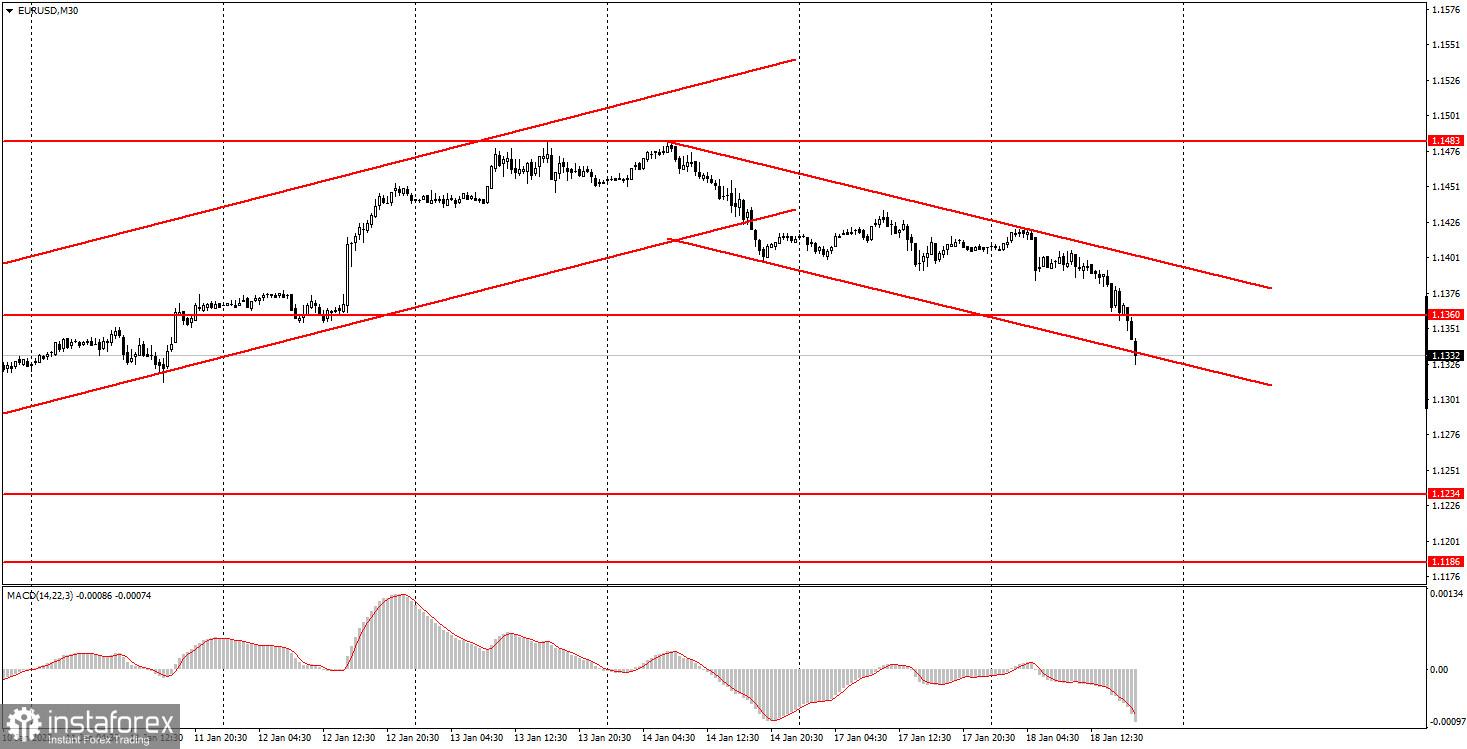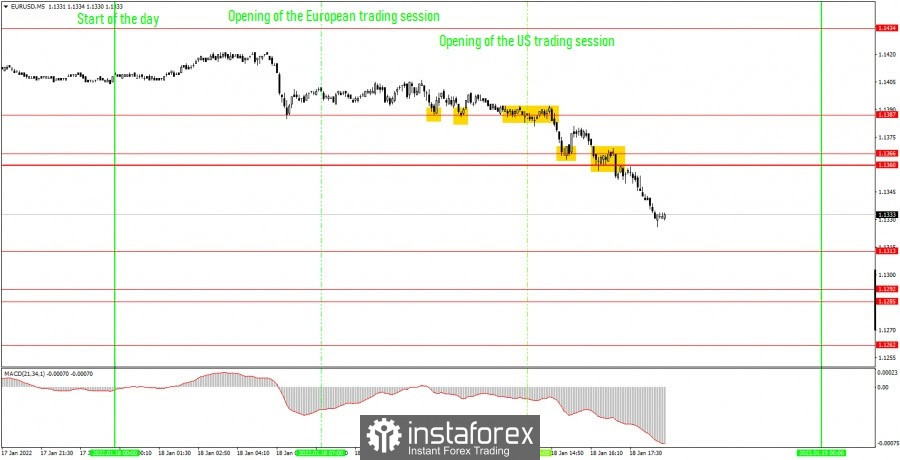Analysis of previous deals:
30M chart of the EUR/USD pair

The EUR/USD pair resumed its downward movement on Tuesday, which allowed the formation of a descending channel. Now the new downward trend is perfectly visualized on the 30-minute TF. Since the trend is present at the moment, it is worth considering short positions on the lower TF. In our other articles, we have already considered the question of why the pair's decline should continue in the medium term. We recommend novice traders to familiarize themselves with our fundamental articles. In short, the euro currency currently has no supporting fundamental factors. The Federal Reserve's monetary policy looks much more hawkish, and this factor is one of the main factors in the exchange rate formation of any currency pair. But there were no average macroeconomic statistics either in the US or in the European Union. Therefore, traders had nothing to react to during the day. But this is even for the best, since the technical downward movement was not interrupted by anything. The volatility of the pair on Tuesday was quite high, and the movement itself was trending.
5M chart of the EUR/USD pair

It is perfectly clear on the 5-minute timeframe that Tuesday's movement can be divided into two periods: in the Asian trading session and in the US one. The pair mainly moved sideways in the European trading session, along the level of 1.1387. Night traffic was quite problematic to work out, since it was nocturnal. And in any case, there were no sell signals formed at that time. Two buy and one sell signals were formed during the European trading session. Considering that we have a downward trend on the 30-minute timeframe, we should have considered sell signals first. It was formed at the junction of the European and US sessions. The price overcame the level of 1.1387, after which it worked out and rebounded from the level of 1.1366. Here it was possible to take profits on short positions, but the buy signal turned out to be false. After a while, the pair overcame the 1.1360-1.1366 area, so novice players could short the pair again. By the end of the day, the quotes dropped another 25 points from the point of formation of the last signal, so in any case, beginners could earn on Tuesday. The movement was trending for most of the day.
How to trade on Wednesday:
A new downward trend was formed on the 30-minute timeframe, as well as a descending channel. It is quite narrow, so if the movement continues for longer than a few days, then this channel may expand over time. Most likely, the lower limit will drop lower. The level of 1.1360 has been overcome, so the chances of continuing the fall are growing. We believe that in the coming weeks, the quotes of the euro currency may fall to the level of 1.1230. On the 5-minute TF, the pair will start Wednesday between the levels of 1.1313 and 1.1360. Therefore, crossing any of them will be a signal. There are quite a lot of levels below the level of 1.1313, so you need to be careful with rebounds. Since we now have a downward trend, we are mainly considering sell signals. As for the macroeconomic background, nothing interesting is planned for tomorrow either in the US or in the European Union.
Basic rules of the trading system:
1) The signal strength is calculated by the time it took to form the signal (bounce or overcome the level). The less time it took, the stronger the signal.
2) If two or more deals were opened near a certain level based on false signals (which did not trigger Take Profit or the nearest target level), then all subsequent signals from this level should be ignored.
3) In a flat, any pair can form a lot of false signals or not form them at all. But in any case, at the first signs of a flat, it is better to stop trading.
4) Trade deals are opened in the time period between the beginning of the European session and until the middle of the American one, when all deals must be closed manually.
5) On the 30-minute TF, using signals from the MACD indicator, you can trade only if there is good volatility and a trend, which is confirmed by a trend line or a trend channel.
6) If two levels are located too close to each other (from 5 to 15 points), then they should be considered as an area of support or resistance.
On the chart:
Support and Resistance Levels are the Levels that serve as targets when buying or selling the pair. You can place Take Profit near these levels.
Red lines are the channels or trend lines that display the current trend and show in which direction it is better to trade now.
The MACD indicator (14,22,3) consists of a histogram and a signal line. When they cross, this is a signal to enter the market. It is recommended to use this indicator in combination with trend lines (channels and trend lines).
Important speeches and reports (always contained in the news calendar) can greatly influence the movement of a currency pair. Therefore, during their exit, it is recommended to trade as carefully as possible or exit the market in order to avoid a sharp price reversal against the previous movement.
Beginners on Forex should remember that not every single trade has to be profitable. The development of a clear strategy and money management are the key to success in trading over a long period of time.





















